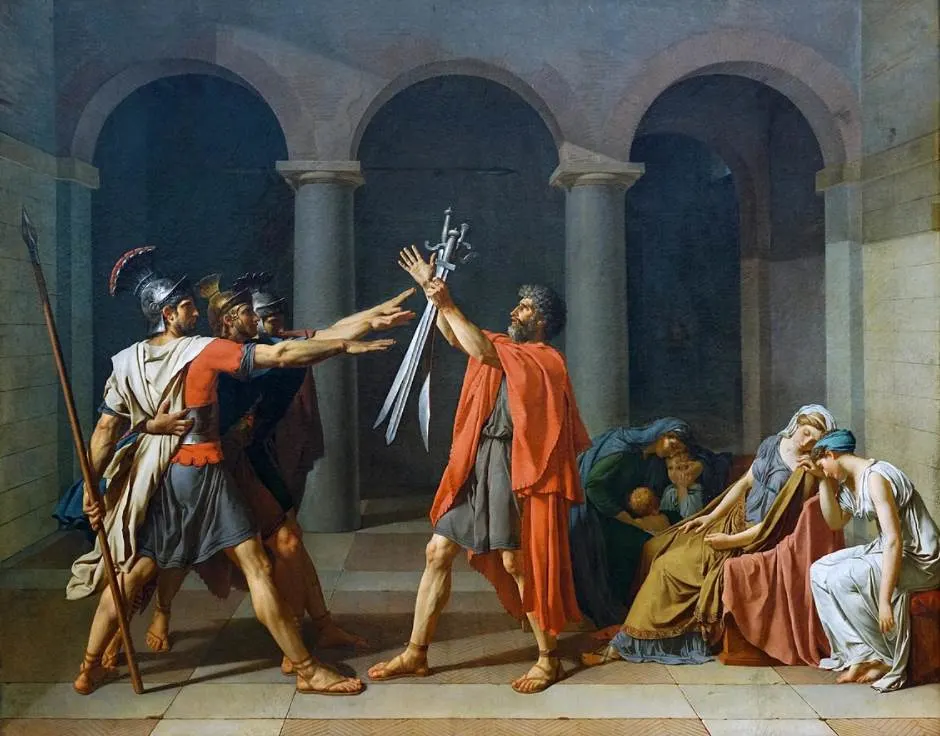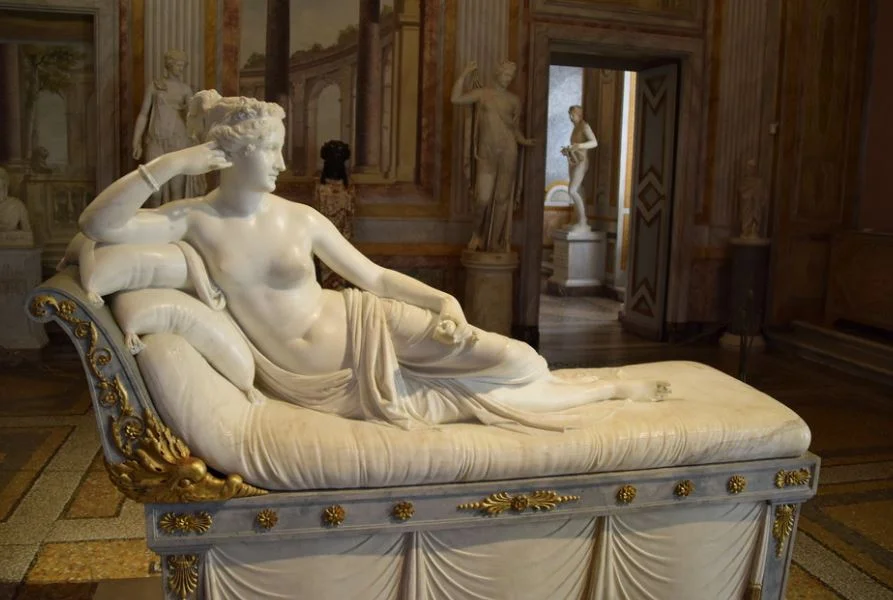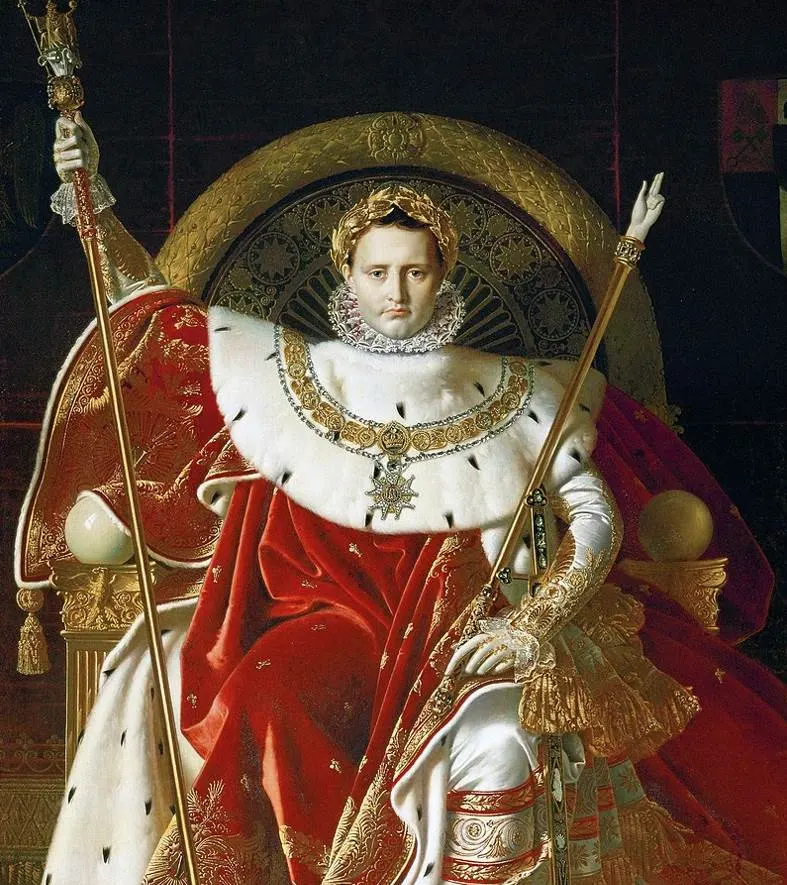The visual arts of the 18th century took a drastic turn from the frivolity and drama of the Baroque and Rococo eras to the austerity and symmetry of Neoclassical Art.
This movement drew inspiration from art produced in classical antiquity. It was eventually replaced by the Romantic art movement which put a high emphasis on human emotions.
History of Neoclassical Art
The interest in art and architecture produced in classical antiquity wasn’t new in the 18th century. It started during the Renaissance period in approximately the 15th and 16th centuries.
This coincided with the rediscovery of famous artworks when new mansions and palaces were being constructed in Rome.
What’s fascinating is that the same thing happened in the Neoclassical period. The ancient city of Herculaneum was rediscovered in 1738 followed by the identification of Pompeij in 1763.
The first scientific excavations of the cities that had been buried under a massive stream of lava following the Eruption of Mount Vesuvius in 79 A.D. had taken place in 1749.
The driving factor behind the renewed interest in classical art and architecture was two books written by German art historian and archaeologist Johann Joachim Winckelmann (1717-1768) titled:
- Thoughts on the Imitation of Greek Works in Painting and Sculpture (1750)
- History of Ancient Art (1764)
The classical style in art and architecture spread to art collectors and major patrons and was eventually adopted by Neoclassical artists.
Remarkably, the term “Neoclassical Art” was only coined in the mid-19th century. Before that, it was referred to as “True Style” or “Revival.”

Main characteristics of Neoclassical Art

The excess and exaggerated drama of the Baroque and Rococo movements became outdated with the rise of philosophy and the Age of Enlightenment.
Pure hedonism was discarded and the revival of classical art was a great substitute in line with the philosophical ideals at the time.
Winckelmann was present when the first paintings were discovered in the villas of Pompeii and he was utterly unimpressed by them.
Because of this and the lack of examples to follow, Neoclassical artists such as Jacques-Louis David (1748-1825) and Anton Raphael Mengs (1728-1779) created a style that they believed to be the ideals of classical art.
These are some of the art movement’s most important characteristics:
- The use of straight lines – These were based on geometric models to produce a symmetrical composition.
- Invisible brushstrokes – Painters did whatever they could to completely hide brushstrokes from the canvas.
- Smooth sculptures – The texture of some of the sculptures produced during the Neoclassical period are almost skin-like.
- Emphasize the foreground – It was not uncommon to completely blank out the background of the painting to highlight the main figures in the foreground.
- The use of dull colors – Using dull colors in parts of the work and bright colors for the main figures to strengthen the narrative of the paintings.
- Idealization – Both paintings and sculptures were heavily idealized.

Types of Neoclassical Art
Neoclassical architecture was a major force in the history of architecture. It emerged during the mid-18th century and spread all across Europe and the world.
A variation of the style referred to as “New Classical architecture” even emerged in the 21st century, a sign that ancient Greek Temples and Roman Temples continue to be a great source of inspiration for architects.
In the visual arts, Neoclassical art was a lot more limited, mainly because of the lack of great examples from Classical Antiquity.
Other art movements emerged in the 19th century such as Romanticism, Realism, and Impressionism which limited Neoclassicism to academic circles.
Painting
Painters were inspired by mythological and historical stories and emphasized a sense of symmetry in their works. Jacques-Louis David and his student Jean-Auguste-Dominique Ingres were the leading Neoclassical artists of the late 18th and early 19th centuries.
Sculpture
Neoclassical sculptures were in high demand throughout Europe during this era. Because of this, artists such as Antonio Canova (1757-1822) and John Flaxman (1755-1826) earned commissions from the highest levels of European society. Especially Italian artist Canova was in very high demand at the turn of the 19th century.
Decorative Art
Multiple waves of decorative arts emerged during the Neoclassical era. Some of these included the Louis XVI Style, the Directoire Style, the grandiose Empire Style, the British Adam Style, and the Central European Biedermeier Style. Just about all of these styles incorporated Classical architecture into interior design and furniture.

Notable Neoclassical artworks
What better way to learn about Neoclassical Art than to check out some of the most famous Neoclassical artworks, right? Below is a list of some of the most notable paintings and sculptures produced during the Neoclassical era:
- Oath of the Horatii (1784) – A monumental masterpiece by the French artist Jacques-Louis David that increasingly popularized art inspired by classical themes.
- Venus Victrix (1804-1808) – Reclining female sculpture that depicts Pauline Bonaparte (1780-1845), the sister of the French Emperor Napoleon Bonaparte at the time.
- Napoleon I on His Imperial Throne – A painting by Jean-Auguste-Dominique Ingres that depicts French Emperor Napoleon I on his throne while wearing his coronation costume.
- Psyche Revived by Cupid’s Kiss (1787) – An early masterpiece by Antonio Canova and one of the most famous sculptures at the Louvre Museum.
- Nymphs and Satyr – A painting by William-Adolphe Bouguereau (1825-1905) from the late 19th century, a period when Neoclassical art was limited to academic circles.
Want to learn more? Check out some of these famous Neoclassical Paintings.

